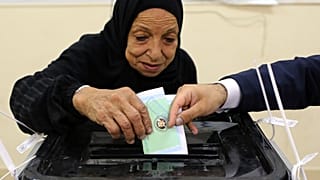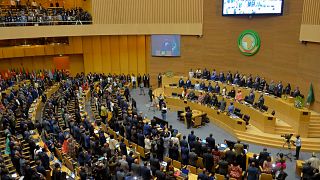USA
It takes off, spins in the air and soars over the countryside.
From the outside, it looks like a light aircraft.
But inside it doesn’t even have a pilot.
This is what Wisk Aero thinks is the future of aviation.
It’s developed this electric-powered, vertical take-off and landing aircraft.
It carries four passengers and can navigate autonomously, with a human being at ground level monitoring the flight.
The idea is that they can be used as air taxis for short journeys of 15 or 20 minutes.
Wisk has brought its latest model, the 6th gen, to the Paris Air Show.
This version is going through flight tests at the moment so that it can become FAA certified and legal in the skies.
Becky Tanner, Wisk Aero’s Chief Marketing Officer, says there is much to organise before these will be regularly whizzing above our heads.
“How do you manage our air space? So a lot of companies talk about air space integration. So how do you safely organise the airspace when you have different types of aircraft flying in it? So that’s an important consideration. And then also the ground-based infrastructure that’s going to be used to service this type of aircraft, charge this type of aircraft, meet and greet customers and all those types of things,” she says.
“For Wisk, what we are saying is that we hope to be operational initially in the United States by the end of this decade.”
The aircraft can fly up to an altitude of 10,000 feet, although the plan is to more typically fly at 4,000 feet.
Charging takes just 15 minutes.
The company’s early plans is to deploy these in US locations including Houston, Long Beach and Miami. It also has an agreement to operate in the Japanese city of Kaga in the future.
But will the public be willing to be flown by AI?
“We understand that this is different, there’s no pilot onboard, we’re all used to having pilots and other personnel on every journey with us, so it is on us to make sure that we’re designing this aircraft to the highest safety levels as possible. So for Wisk what that means is that we’re committed to meeting or exceeding commercial aviation safety levels. So the safety expectations that you have when you hop on a commercial airplane, that’s exactly what we’re developing here at Wisk,” says Tanner.
Also hoping to get a slice of the air taxi market is Archer Aviation.
It’s building the Midnight aircraft, which is also electric powered and can take off and land vertically.
They are keeping the pilot though, so no AI driving this machine.
Midnight can also carry four passengers.
Some estimates suggest 30,000 eVTOLs will be needed by 2045.
Archer CEO Adam Goldstein won’t put a figure on it, but he believes demand will grow rapidly.
“I think the industry for these aircraft is going to be very, very large. Hard to predict, this is day 1. Day 1 of a new industry. It’s like the first Boeing 737-100, and it’s 1964, and we’re trying to predict how big this industry will be. Well even today, not that many people have flown on planes, it’s still in the single digit percentage of the global population,” he says.
Archer plans to first launch the air taxis in the UAE, Ethiopia and Indonesia, and has agreements with local companies to make that happen.
It’s also the official air taxi provider for the 2028 Los Angeles Olympics.
But will this be a service just for the wealthy elites?
“One of the core advantages of this aircraft is that it’s electric and it’s really simple. And that means that we can keep costs down on the aircraft which ultimately can be passed back down to the consumers,” says Goldstein.
“Our electric engines have six moving parts. And if you put that in comparison to a piston or combustion engine like you’d see in a helicopter, that is an incredibly low amount in a very simple product that we’ve built. That means the maintenance of these aircraft can be really low (cost), that means we can design an aircraft that can be affordable and ultimately available to the masses. So this is a product that was designed for mass use, not designed for the super rich.”
Other ideas for future aviation include hybrid aircraft, as missing electric power with traditional fuels will allow longer range.
The Paris Air Show runs until 22 June.
Around 2,500 exhibitors from 48 countries are showcasing the latest aviation tech.
300,000 people are expected to visit this year.













01:10
Ten tourists and local pilot die in plane crash in Kenya
00:56
India: airlines ordered to inspect Boeing airplane models after crash
01:33
Families of Air India plane crash victims begin to receive bodies
01:00
Syria reopens international air travel as Qatar Airways flight lands in Damascus
01:00
Hundreds gathered in Hong Kong on Saturday to watch the city’s first panda drone show
01:00
179 dead in South Korea plane crash; officials suggest bird strike to blame for the incident